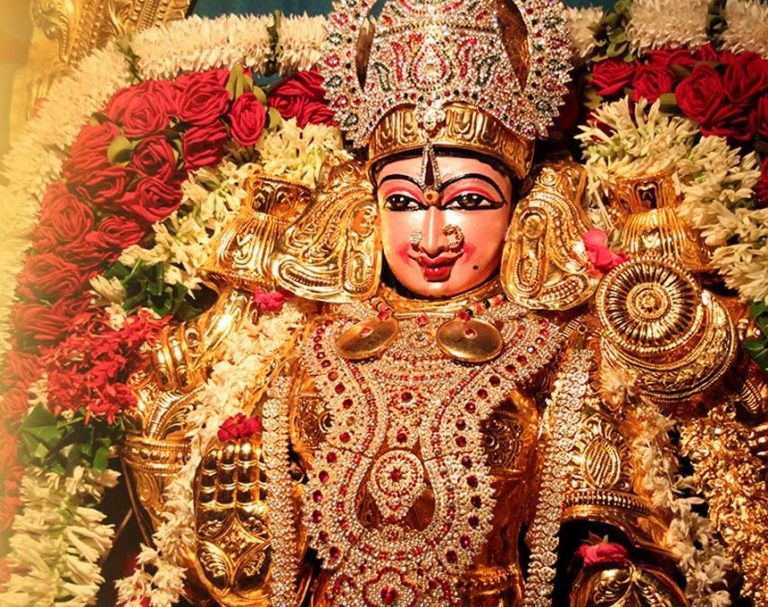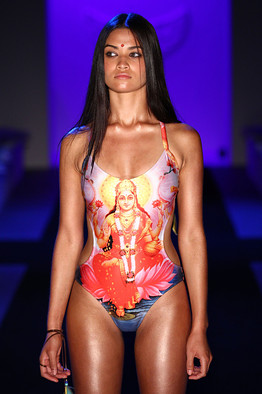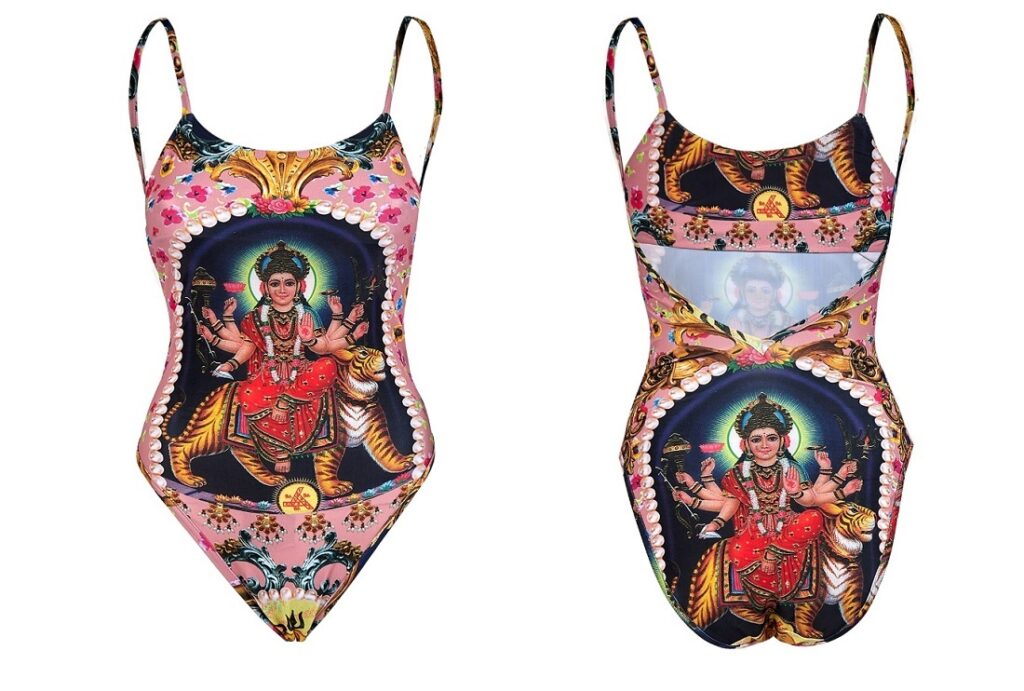Hindu goddess Lakshmi on swimsuit

Why Hindus are victims to everyone?
India-Australia relations suffered a minor setback this week, after a swimsuit by an Australian fashion designer featuring a portrait of Lakshmi, the Hindu goddess of wealth and prosperity, sparked outrage across the subcontinent.
Designer and model Lisa Burke presented the swimsuit as part of the latest collection of her Lisa Blue label at Australian Fashion Week Thursday.
But when pictures of an Indian-looking model wearing a one-piece swimsuit with a portrait of Lakshmi printed on its front and rear made their way to India, Hindu nationalists didn’t like what they saw.
Over the weekend, they took to the streets in several Indian cities, including Hyderabad where pictures show activists burning the Australian flag in protest against what they viewed as an act of deep disrespect.
Why Goddess Lakshmi on Swimsuit ?
Archaeological discoveries and ancient coins suggest the recognition and reverence for Lakshmi by the 1st millennium BCE. Lakshmi’s iconography and statues have also been found in Hindu temples throughout Southeast Asia, estimated to be from the second half of the 1st millennium CE. The festivals of Diwali and Sharad Purnima (Kojagiri Purnima) are celebrated in her honor.

Ms. Burke’s label was quick to announce a halt in production, vowing that the Lakshmi swimsuit would never make it to stores.
“The image of Goddess Lakshmi will not appear on any piece of Lisa Blue swimwear for the new season, with a halt put on all production of the new range and pieces are shown on the runway from last week removed. This range will never be available for sale in any stockists or retail outlets anywhere in the world, ” said a statement posted on the Lisa Blue Web site Saturday.
“We apologize to the Hindu community and take this matter very seriously,” it said.


Lakshmi is depicted in Indian art as an elegantly dressed, prosperity-showering golden-coloured woman with an owl as her vehicle, signifying the importance of economic activity in maintenance of life, her ability to move, work and prevail in confusing darkness. She typically stands or sits like a yogin on a lotus pedestal and holds a lotus in her hand, symbolizing fortune, self-knowledge and spiritual liberation. Her iconography shows her with four hands, which represent the four goals of human life considered important to the Hindu way of life: dharma, kāma, artha and moksha. She is often depicted as part of the trinity (Tridevi) consisting of Saraswati, Lakshmi and Parvati. She is also considered as the daughter of Durga in Bengali Hindu culture.



